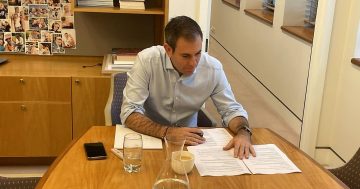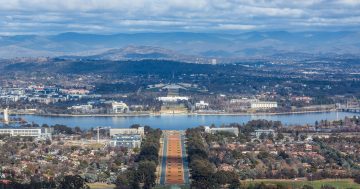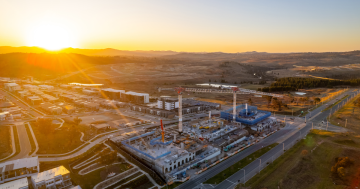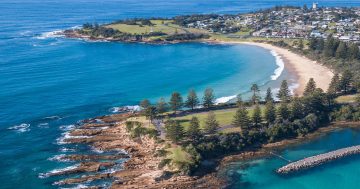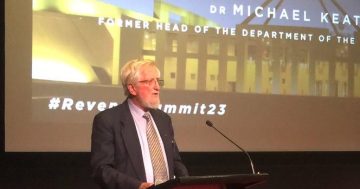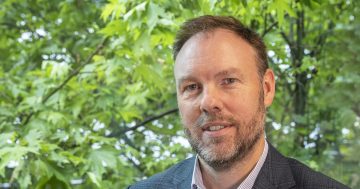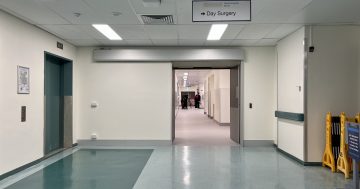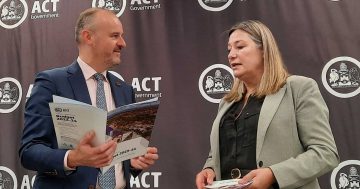
1.4% does not sound like much, perhaps the paltry level of interest paid by the banks at the moment. It happens however to be Australia’s current rate of population growth, and co-incidentally the rate of population growth for the ACT. It has Australia on track for a population in 2050 of 40 million up from the current 24 million, or close to doubling over the next 34 years. The ‘magic’, in this case black magic, of compound interest. This is important if your horizons are further ahead than the next election.
If you google India’s rate of population growth, it is 1.2%, or lower than Australia’s. Many Australians are surprised to hear that our rate of population growth is more akin to that of a developing country and in fact higher than that of many developing countries. Most of Australia’s population growth comes from our immigration program, with the rest of the growth due to a still large natural increase, that is many more births than deaths. This high level of population growth causes us to chase our tail building ever more schools, hospitals, transport systems and above all, perhaps, houses and apartments. Sure, the gross domestic product (GDP) is likely to grow as more people are pumped into an economy but not necessarily the GDP per person. Is it any surprise that Australia has had 25 years of so-called ‘growth’ and yet many do not feel their standard of living has actually improved? Big business loves lots of customers for its products, and lots of workers so it can bid down wages. The major political parties’ ties to big business, especially property developers, in part explains Australia’s obsession with ‘growth’, population growth and the fake economic growth of a GDP swollen by more and more consumers.
The damage to the environment caused by population growth, the loss of natural and built heritage and the natural environment to new housing developments, the loss of habitat for native species and the destruction of sites of Aboriginal significance are all pretty self-evident around the ACT, which also happens to be in the arid part of Australia. Only someone with no memory of the 2000-2010 drought can believe that Canberra’s water supplies are assured into the future.
But back to immigration. I should explain that I’m a direct beneficiary of immigration; my wife is Uzbek, now Australian, and she and our twelve year old daughter happily chat away in Russian at home. I worked in immigration for 25 years, including as a Director of the Department of Immigration, and have lived and worked in Mexico, Korea, Cambodia, Turkey and lately Spain, and have friends ranging from Thai to Turkish. I’m also the president of Sustainable Australia (ACT) and running in the coming ACT election for the seat of Kurrajong.
During the last federal election, when I was a candidate for the Senate, Sustainable Australia ran under the banner ‘lower immigration’. We are for immigration, and reject the selection of migrants based on religion or race, but would like to lower Australia’s annual permanent immigration program from the current record of around 200,000 back to around 70,000, being its average annual permanent intake level during the twentieth century. It would not mean lowering our refugee (or humanitarian) intake, which is separate.
Obviously the ACT government does not set Australia’s immigration program but Sustainable Australia is calling for slower population growth for the ACT which we propose could be achieved by taking a more neutral stance on population issues, for example discontinuing ACT government programs vigorously encouraging people to move to the ACT. Of course if Australians choose to move to the ACT that is their right, and we are not suggesting they be discouraged, just simply not overtly encouraged. As far as settlement from overseas goes, the ACT government is involved in various schemes that provide Territory government sponsorship for migrants, and Sustainable Australia’s policy is to cease involvement with such schemes. Migrants would of course still be very welcome in the ACT. These moves will not massively alter the ACT’s population growth rate but they are more than symbolic.
A slower population growth rate for the ACT does not mean the end of expansion or the death of the construction industry, but rather a chance to reduce the deleterious impacts of too rapid development and to help give all Canberrans a sustainable future. That means supporting a Canberra that is better, not bigger.
John Haydon, Sustainable Australia (ACT) candidate for Kurrajong












